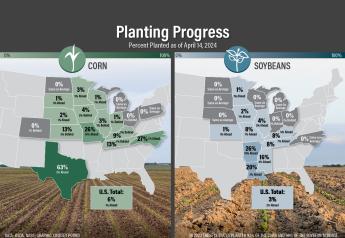Hose Type Impacts Herbicide Carryover
Herbicide residue tends to hide in some hoses more than others. Of the hoses tested (pictured above) at Mississippi State University, the VersiGard synthetic rubber hose showed the greatest carryover herbicide damage. The ethylene-centered PMA 4086-08 had better cleanout.
“[Non-ethylene-centered] hoses had microscopic breaks in the interior lining where the herbicide could sequester and rejoin the solution later,” says Dan Reynolds, Mississippi State weed scientist. “Farmers are especially likely to see herbicides rejoin the solution when using herbicides with good solvent and surfactant loads that tend to bring residues from tanks into the solution.”
Without any hose cleanout, yield loss from the rubber hose was as high as 19%, and it was 8% from the ethylene-centered hose. Yield loss from carryover dicamba in the VersiGard hose was equivalent to spraying a 1/256 rate on sensitive soybeans.
The ethylene-centered hose can be ordered from Kuri Tec or John Deere. And yes, it’s the most costly.
Triple Rinse to Avoid Damage
Just 0.000488 lb. of dicamba per acre can reduce yield by 10% in sensitive soybeans. A half-pound rate can drop yields by 97%, according the University of Arkansas. If 2,4-D hits sensitive cotton 30 days after planting, 0.025 lb. of active ingredient per acre can cause a total loss, according to Oklahoma State University. Dicamba manufacturers provide these cleanout guidelines:
· Immediately drain the sprayer after use. Open boom ends, and flush tank, hoses, boom and nozzles with clean water.
· Inspect and clean strainers, screens and filters.
· Mix a cleaning solution with detergent or sprayer cleaner.
· Wash all parts of tank, agitate sprayer and recirculate cleaning solution for at least 15 minutes, and remove visible deposits.
· Flush hoses, spray lines and nozzles with cleaning solution for at least one minute.
· Drain pump, filter and lines (Engenia label); repeat the above steps two more times (XtendiMax and FeXapan labels).
· Rinse complete spraying system with clean water (Engenia label); remove nozzles, screens and strainers, and clean separately in cleaning solution (XtendiMax and FeXapan labels).
· Clean and rinse exterior of sprayer (Engenia label); dispose of rinsate as specified by laws (XtendiMax and FeXapan labels).
· Dispose all rinsate based on requirements (Engenia labels); drain sump, filter and lines (XtendiMax and FeXapan labels).
· Rinse the complete spraying system with clean water
(XtendiMax and FeXapan labels).







